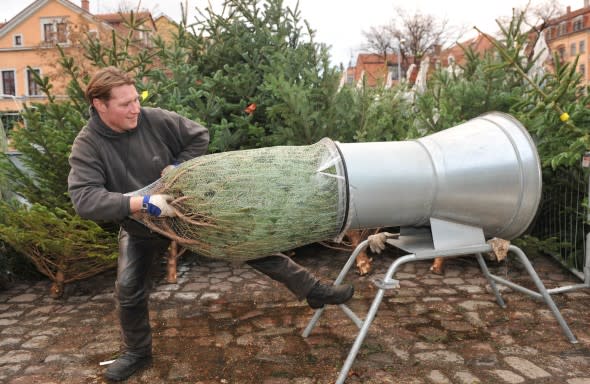Real Christmas trees are better for the environment, experts say
For many, the passing of Thanksgiving marks the official start of the Christmas season. Lights are hung from houses, holiday decorations start to appear practically everywhere, and many homeowners set out to find that perfect Christmas tree for the holiday season.
Fake trees have increased in popularity in recent years in the United States. In 1989, about 40 percent of homes displaying Christmas trees used an artificial tree. That number increased to 58 percent in a 2004 ABC News/Washington Post poll.
And in 2016, that number was up to 81 percent, according to a survey conducted by Nielsen on behalf of the American Christmas Tree Association, (ACTA).
Consumers are leaning toward artificial trees for numerous reasons. Some suffer from allergies, others hope to save money and many opt for a fake tree for convenience.
Doug Hundley, seasonal spokesperson with the National Christmas Tree Association (NCTA), highly recommends real over fake Christmas trees.
"The scent and the meaningful impact of a real Christmas tree for children and adults cannot be replaced by a manufactured tree. Sometimes the convenience of using plastic isn't worth it," Hundley said.

Shop assistant Sven Helmich prepares a Christmas tree for selling on the market of a tree dealer in Dresden, Germany, Tuesday, Dec. 2, 2008. (AP Photo/Matthias Rietschel)
There are several advantages and disadvantages for both real and fake trees.
However, real Christmas trees are better for the environment and often for your health than artificial Christmas trees, according to Mr. Green at the Sierra Club.
"A real tree is a renewable resource, whereas a fake tree is usually made from plastic, which is derived from oil, a nonrenewable resource. The real tree can be recycled as mulch, compost, or wildlife shelter, whereas the fake tree can't," according to Mr. Green.
Real trees absorb carbon dioxide while they grow, which helps to reduce the impacts of climate change.
The belief that real trees cause deforestation is false. Real trees are farmed, often on marginal land that can't be used for other purposes, according to Mr. Green.
Real trees also do not contain harmful chemicals, but fake trees are often made with plastic polyvinyl chloride (PVC) or volatile organic compounds (VOCs), whose manufacture releases highly toxic material. Plus, lead may have been added to stabilize the plastic.
VOCs can pose numerous short- and long-term adverse health effects, according to an EPA spokesperson.
There are a few environmental disadvantages of real Christmas trees. However, these potential harms may be reduced through research.
Real trees require a lot more shipping energy than the one-time shipment of a fake tree that will be used for an average of nine years before being dispatched to the landfill.
While about 85 percent of fake trees are made in China and are shipped farther than real trees, they require considerably less energy to ship.
Real trees are also often grown with pesticides. However, it is unlikely that these cause more environmental problems than the petrochemical stew from which fake trees are produced, according to Mr. Green.
There are still a lot of real Christmas trees going into landfills. That is very bad for the environment because they decompose very slowly and create methane, which is a greenhouse gas, Sophie Neuberg, a campaigner for Friends of the Earth, told CNN.
Methane has 25 times the potency of carbon dioxide, according to the US Environmental Protection Agency (EPA).
These problems can be ameliorated by either buying a tree from a local source or by buying an organic tree. Find trees closest to home through the NCTA Real Christmas Tree Locator.
Quiz Maker - powered by Riddle
